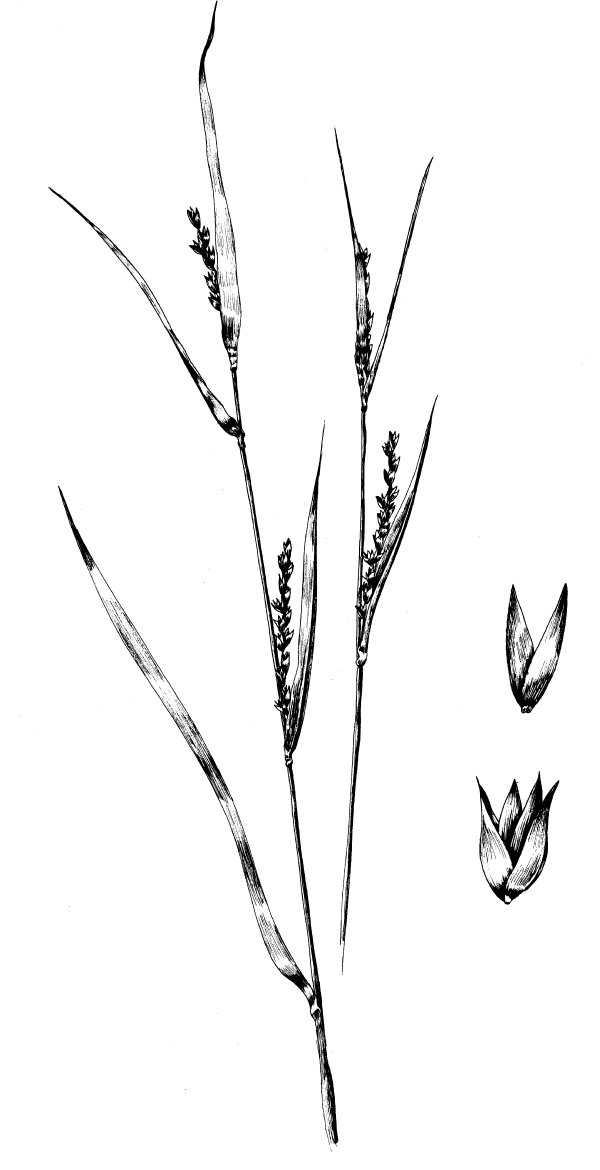
Sporobolus vaginiflorus (Torr.). Poverty Dropseed Habit: Annuals, branching from the base. Culms: Tufted, 20-60 cm. tall, erect or widely spreading, from a decumbent base, slender, freely branching, exposed internodes often rough, nodes often reddish, flattened on each side next to the blade. Blades: Upper 6-25 mm. long, lower elongate, 2 mm. wide or less, involute toward the tip, upper surface scabrous near the base, sometimes papillose-pilose on the margins and lower surface towards the base. Sheaths: Much shorter than the internodes, wider than the blade, smooth to slightly rough, sometimes papillose-pilose and pilose at the throat with hairs 3-4 mm. long. Ligule: A ring of minute hairs. Inflorescence: Panicles numerous, spikelike, usually not more than 3 cm. long, wholly or partly included in the inflated sheaths, or the terminal panicle exserted, late in the season the sheaths swollen and containing cleistogamous spikelets. Spikelets: 3.5-4.5 mm. long, 1-flowered, on short scabrous pedicels, those of the terminal panicle often larger than those of the branches, awnless, rachilla disarticulating above the glumes. Glumes: The first shorter than the second, subequal, acute, 3-5 mm. long, nearly as long as the lemma. Lemmas: Usually longer than the second glume, 1-nerved, acuminate, scabrous, minutely appressed-pubescent, sometimes mottled with dark spots. Palea: Acuminate, sometimes longer than the lemma, minutely pubescent, especially towards the apex. Fruit: Grain free from the lemma and readily dropping off, pericarp loosely enclosing the seed, thin and evanescent. Habitat: Sterile fields and open waste places. August-September. Kansas Range: East half. Synonyms: Sporobolus vaginiflorus (Torr. ex Gray) Wood var. inaequalis Fern.